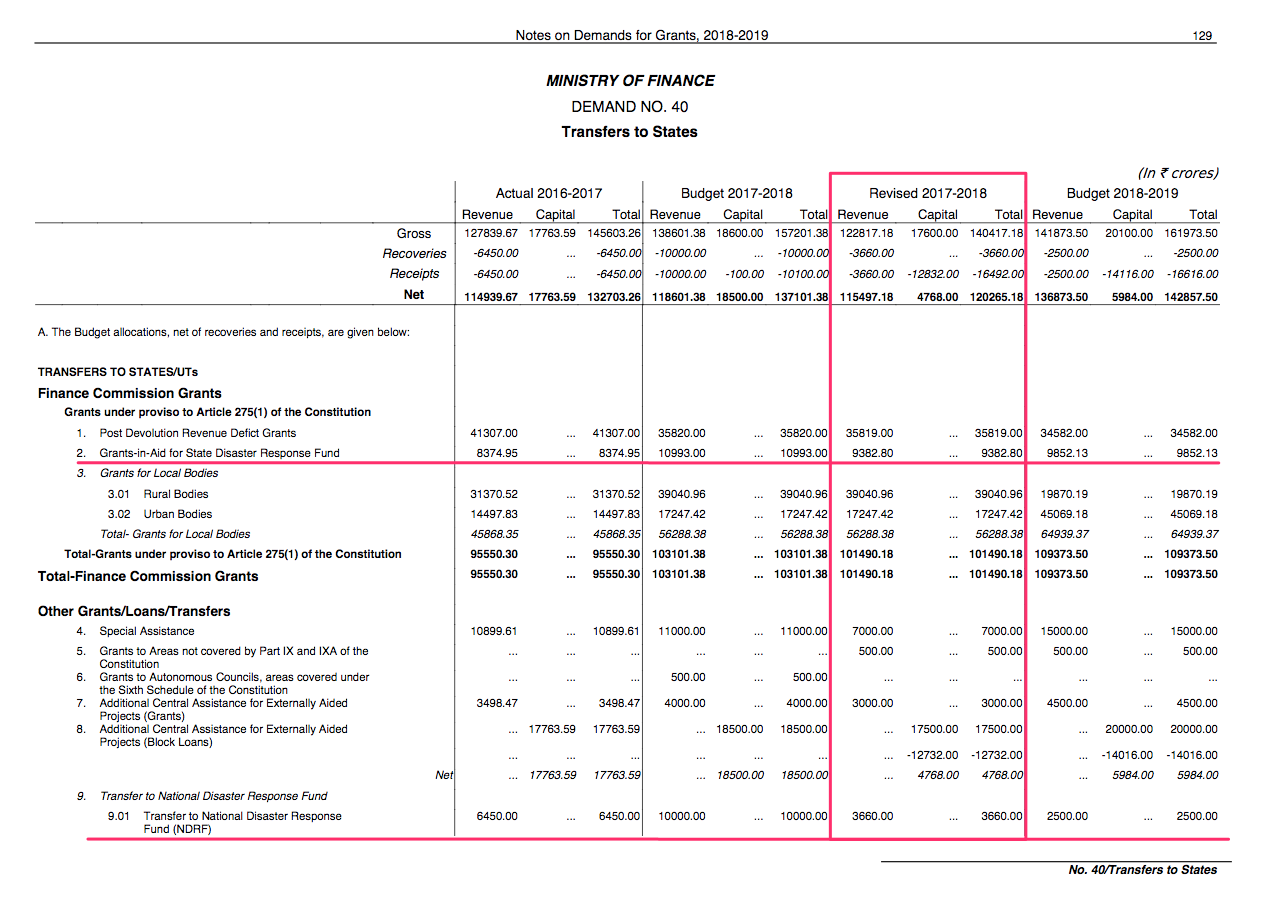Cyclone Gaja - this year’s natural disaster which has landed like a stab in the gut for Tamil Nadu.
… Cyclone Gaja is a major disaster, and its economic impact in Tamil Nadu is comparable to that of the tsunami of 2004.
After the disaster, the Tamil Nadu’s Chief Minister announced a relief package of 1000 Crores for the affected regions. Anyone who hasn’t worked on the Tamil Nadu’s budget for the current financial year wouldn’t be wrong to assume that Tamil Nadu’s disaster relief budget allocation would be greater than the said 1000 Crore. Logically it makes sense, to assume that the government is allocating a part of money kept aside for the purpose. But not in this case, Tamil Nadu has a total allocation of 786 Crores for disaster relief. [Reference: Tamil Nadu Budget 2018-19 Couldn’t find the English version]

Then the CM requested additional 15,000 crores from the Union Government. Now a little bit about the disaster relief funds from the central government. There are two types of funds SDRF (State Disaster Relief Fund) that the union government transfers to the state governments to build the state corpus and NDRF (National Disaster Relief Fund) that the central government uses to provide immediate and temporary relief in case of a national emergency. Here is the relevant page from the union budget.

- SDRF = 9382.8 Crores
- NDRF = 3660.0 Crores
- Total allocation in the budget for the entire country = 13,042.8 Crores
The reality that the numbers tell us is that, with the NDRF size of 3,660 crores and 30 states in the union, it is foolish to expect anything more than 120 to 150 Crores from the central government as disaster relief. Remember, this is the year multiple states like Kerala and Mizoram have already experienced disasters like floods. Put together the NDRF allocation TN will probably get and the entire allocation of TN disaster fund gives us a sum of 150+786 = 936 crores.
The number begs the question - Are the leaders in Tamil Nadu really numerate? Do they even fathom the numbers they are spouting to us in the public? Why would a CM ask for an amount that is bigger than the total union budget (for disaster relief) if he understands fiscal management? Is there no one on the bureaucracy who understands it too?
As a defense one could say, the difference between the available funds in the budget and the relief expenditure would be borrowed now and settled later by the government. But it is hard to buy that defense. [Update 1]
When there is a genuine way to actually tell the public about the available funds (786 crores) and informing us that 100% of the year’s budget would go to the 11 affected districts and extra funds would be requested from the center, the people in power are quoting random imaginary numbers which they could later serve to serve their own purposes. I wish our media would do this research and ask the hard questions that need to be asked, rather than praising the volunteers.
Update 1:
I thought I would add the rationale to validate why the government won’t be borrowing more money for disaster relief.
- The biggest expenditure in the union budget is Interest payment. We have so much debt that 23.58% of the entire budget (or 1/4th) goes into just interest payments.
- India is already struggling to meet its fiscal deficit target. Borrowing more is only going to worsen the situation.
So, in practical terms, the argument that govt would somehow find money to finance the disaster relief is void.
Update 2:
The central government has announced a relief package of 353.7 crores for Tamilnadu from the SDRF. This is slightly higher than the amount the union govt should have given the TN govt anyway. SDRF fund 9382.8 shared between 29 states = 323.53 crores. To be clear, this is the amount which would have been given to Tamilnadu anyways. Here is the explanation from the budget document: